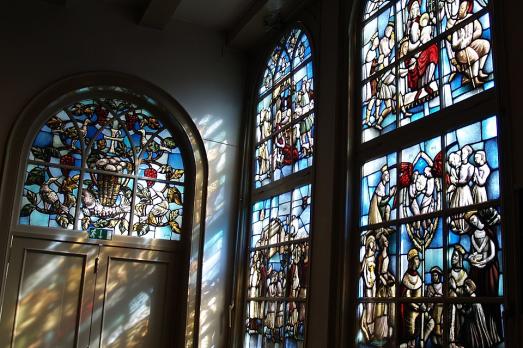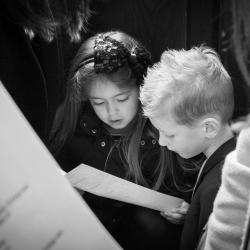H.H. Engelbewaarders
Hazerswoude-Dorp, NL
Sober, single-nave church in neo-Gothic and neo-Romanesque styles, with a three-sided closed choir and a slender, half-recessed tower with a constricted spire, built 1879-1881. Designed by Th. Asseler, executed after his death by AC Bleijs.






